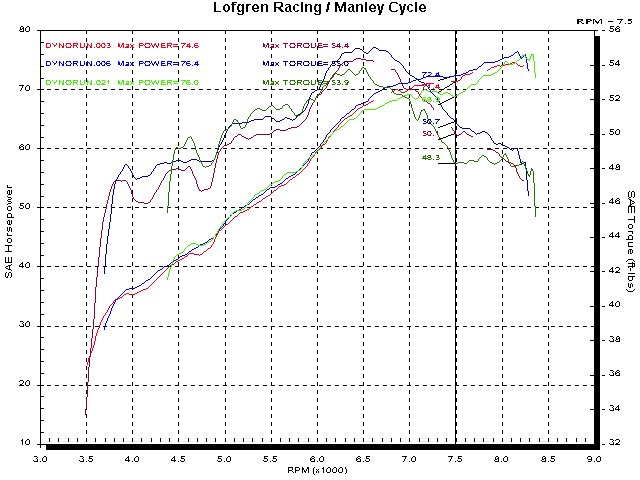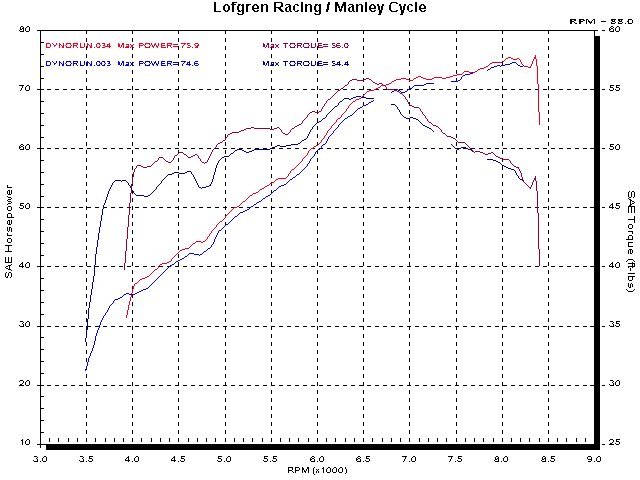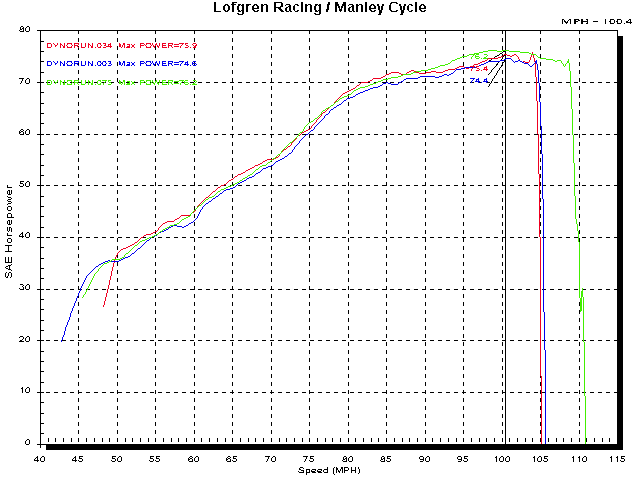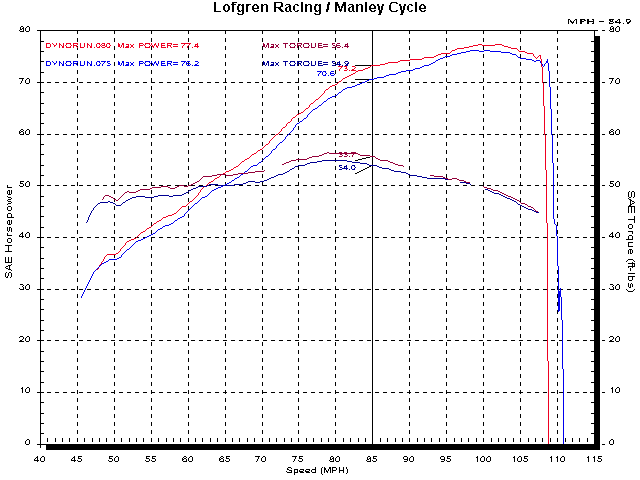
Re-mapping an MH900e
The opening line on my homepage states that 'I'm an idiot'. Although my tech reports may lull one into believing that may not be true, I'm constantly reminded that it is.
Read on.
Brent vanTassel bought an MH900e and acquired a set of very cool pipes. These consist of two separate, unconnected, large diameter pipes and mufflers. The 'two separate' part is the key!
Brent has had his 996 and his MV F4 re-mapped, so he thought that the MH900e might respond positively too.
I've mapped over 90 Ducatis using FIM software. Maybe I'm spoiled, but, I've learned to count on the features available when you have access to the original operating system. These include; fuel maps main and rear, ignition maps, altitude compensation, rev limiter, and the air temp and coolant temp maps.
Because every Ducati I've ever mapped has had both cylinders connected in one form or another, I just put the air/fuel ratio sensor into a pipe and commence the procedure.
This time things progressed normally until I started to approach what appeared to be a good A/F ratio. Run #003 (red), below, was the earliest and #006 (blue), after I had started to improve the A/F ratio. Then, as I thought I might be getting close, the A/F ratio looked good but the torque at 7500RPM dropped! (green)

After a considerable amount of head scratching, I discovered that I had the A/F sensor in the rear cylinder pipe and I had been adjusting the main (front cylinder) map. (See, I told you I'm an idiot!) If both pipes where identical (which they are not) I would expect both cylinders to have the same volumetric efficiency curves. In this case, it was obvious that the rear cylinder map, usually needing small percentage variations over the main map, would need to be extensively re-worked.
The good news was, with separate pipes the single A/F sensor could be used to map each, albeit it would require doing the job twice.
I began by re-mapping the main map while checking the correct cylinder. Duh!!!
As you can see on the chart below, the torque was getting better and things were under control. So I thought!

I started to map the rear cylinder using the same procedures, but it became clear that the rear map changes weren't doing much, if anything. Another thing that was bothering me was how very rich the rear cylinder was, compared to the front. That would explain why the power began to drop (the first chart) when I thought that the front cylinder A/F ratio was getting close to correct. I had been leaning the rear cylinder with the main map, until the front cylinder began to lean mis-fire.
Time to stop and contact my friendly Ultimap support department. Fortunately, it was the end of my workday and Duane Mitchell was near his telephone. (Since I'm in the central area of North America and he's in Australia, he's 16 hours ahead.)
He informed me that the rear cylinder map didn't really get re-loaded. The Ultimap V 31.07 software allowed the rear cylinder map to be adjusted but only the main fuel map and the ignition map were loaded. That made sense, since I never felt the need to adjust the rear map until this separate exhaust system allowed separate measurement.
Duane said that some other customers wanted the ability to change the rear map and he would add that capability to a new version. Unfortunately, he was a couple days from leaving for a months vacation.
The no rear map thing explained why I couldn't adjust the A/F but I was still curious about why the rear cylinder was so rich overall.
During the down-time I decided to check the injectors. Manley Cycle has a injector checking/cleaning bench so I took them out of the bike and checked the flow rates.
Uh-oh!!! The injector for the rear cylinder had a bad spray pattern. The flow test showed that the rear cylinder injector had 5% more flow than the front, which had a good spray pattern.
The standard injector flow tests uses a variety of pulse rates and duty cycles, so I tried some comparisons at the same duty cycles, then at the same pulse rates. When I tested at 2500 pulses/second the flow of the bad injector was 12.5% greater than for the other. 2500 cycle/second is the frequency that fires 5000 RPM and that is the middle of the RPM range.
That was the excess fuel that I had detected and wondered about.
This is where being an idiot pays off! If you don't check your work, you can assume that it's perfect.
The bike was still on warranty, so I talked to the service manager at Moto Primo (our local Ducati dealer) about coming over to see for himself, since there is no way either the dealer or Ducati North America could check it. Apparently, the service manager talked to a warranty tech at DNA and the tech suggested that I probably dropped it!
I had to re-assemble the bike and then the customer had to take it over to Moto Primo to start the warranty process, which took about 11 weeks. Ultimately, the mechanic, Todd Fischer, declared it a bad injector and the parts department ordered a new one. The customer is just lucky that Todd trusts me.
During the wait, Duane had a nice vacation, then, wrote Ultimap V32.01 and I was ready to map the rear cylinder.
After getting the rear cylinder (green) A/F ratio pretty good the power curve is smoother and the peak power is better. Also, the throttle response is much better everywhere.

And then, Brent brought over an open air-box filter kit and asked that I install it and re-map.
One more time, but at least the starting points were better!
The open air-box kit resulted in more gains, shown by run #080 (red).

Removing the air-box top adds a bunch of torque and a couple HP, but the rear cylinder pipe isn't doing it's part to produce power.
Without the ability to change the rear map this combination of parts would run like crap because the A/F ratio for one cylinder would always be off. Instead, the bike responds well and makes OK power.